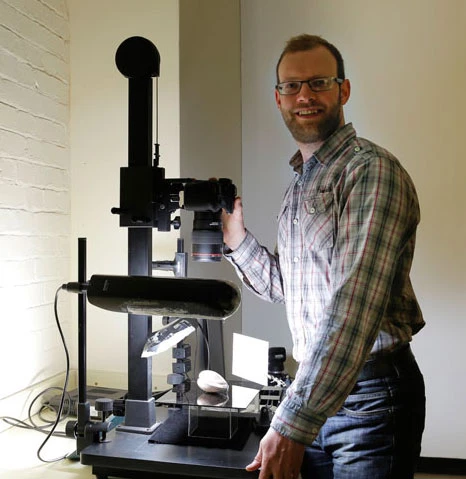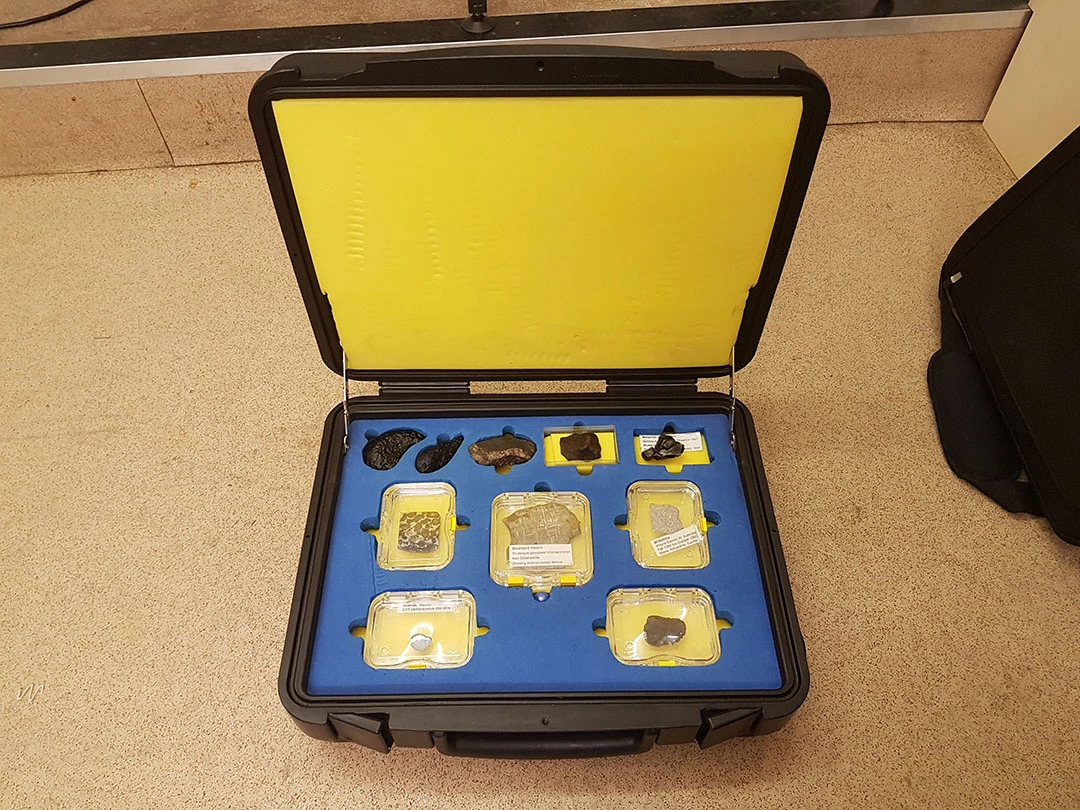Down 2 Earth...with an impact!.
, 5 July 2017
I joined the museum team in June this year, as a design placement student from Brunel University, to begin the process of digitising parts of the Natural Sciences outreach collection. The project makes use of 3D scanning technology to create virtual versions of meteorite, rock and fossil specimens. Which can then be used to create a digital library of the collection.
The aim of this project is to create an online exhibit which is always accessible and available for everyone, developing it for outreach and education in a virtual environment. Digital scans will allow the public to get 360o views of specimens, meaning you could notice newfeatures and details not seen when specimens are behind a display case or shown in photographs.
Initially I will be working on the collection available in the Down2Earth loan boxes and designing the best environment for them to be displayed digitally. The objective is to create an environment that allows for exploration of specimens and the ability to see them in a whole new way, while also encouraging learning. Making the scans will be a useful resource both for those who are borrowing the boxes, as a source of information, and for those who are unable to borrow the boxes as a way to still interact with the specimens and learn about them.
The process of creating the virtual specimens uses an Artec 3D scanner, a rotating turntable and a computer. Placing the specimen on the turntable, several scans are made with it at different orientations. Once the whole specimen has been imaged computer software is used to align each scan, this can be a fairly fiddly job but once complete the software runs a process that removes any outliers and creates an accurate and precise representation of the specimen’s shape and surface texture. I then begin the post-processing steps of setting the material to look as realistic as possible along with setting it into a virtual scene and lighting it. The final stage is to add in the information that comes with the specimen and highlighting points of particular interest.
However not all specimens can be imaged using the scanner as they may be too shiny, in the form of slices or too delicate. The plan with these objects is to photograph them in high detail from multiple sides and in different settings (e.g. backlit), in the hopes that the user can still find ways to explore the specimen, by moving around, zooming in and changing the lighting.
Creating a virtual collection to go alongside the physical one could completely change the way the public engage with the collection. Opening up new avenues of user interaction and therefore adding to the user experience. The specimens scanned so far are being hosted on our Sketchfab account, sketchfab.com/museumwales, until the project page has been designed and developed. You can explore objects such as this cast of a Tyrannosaurus Tooth and many other fossils, meteorites and rocks there right now.



